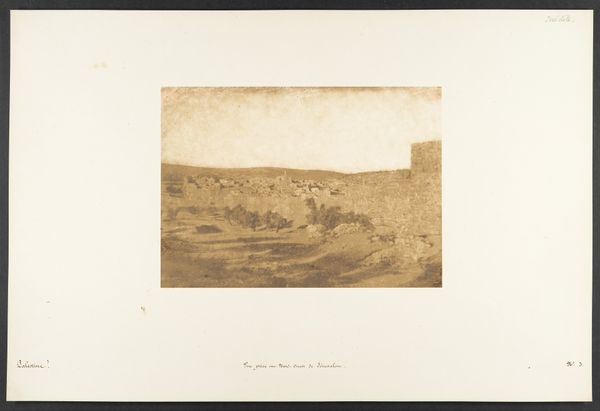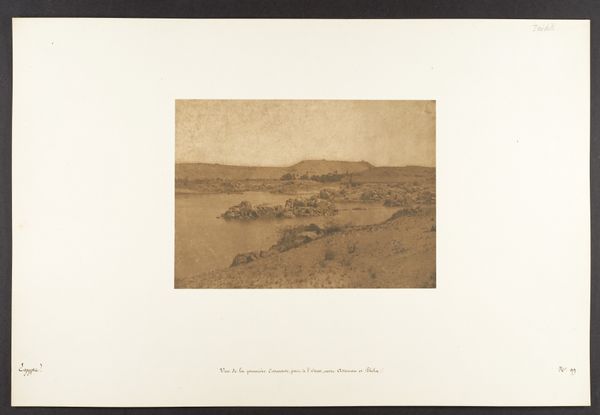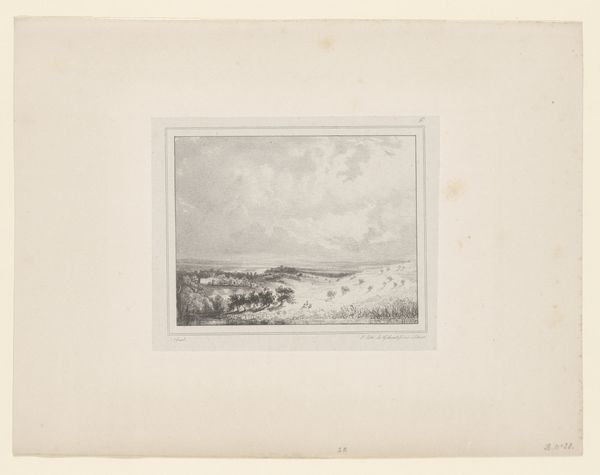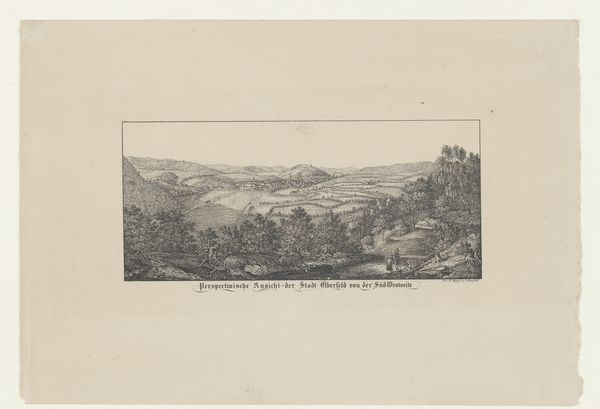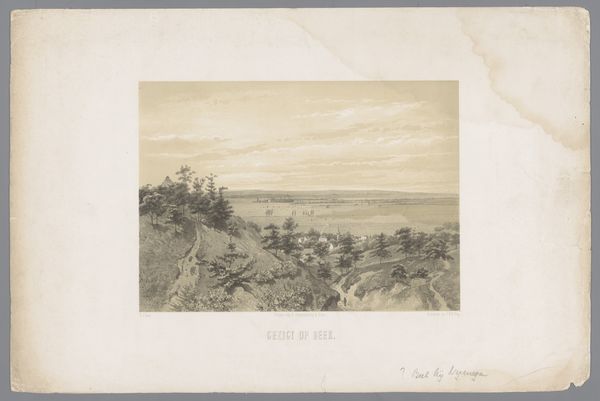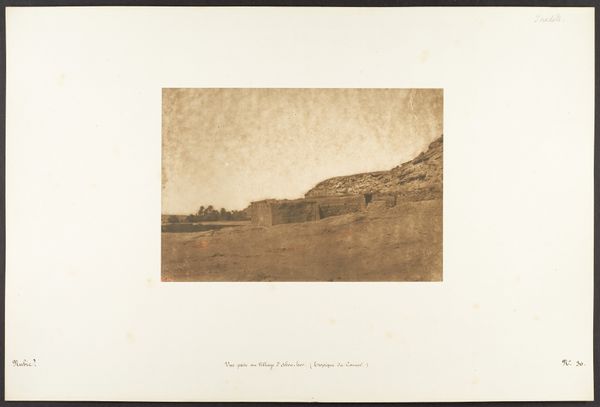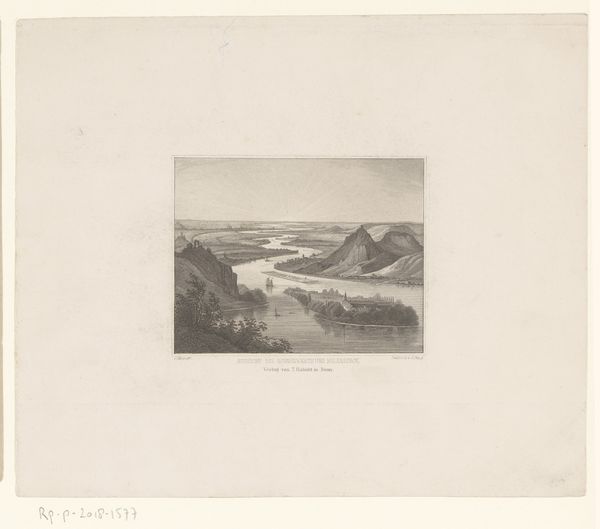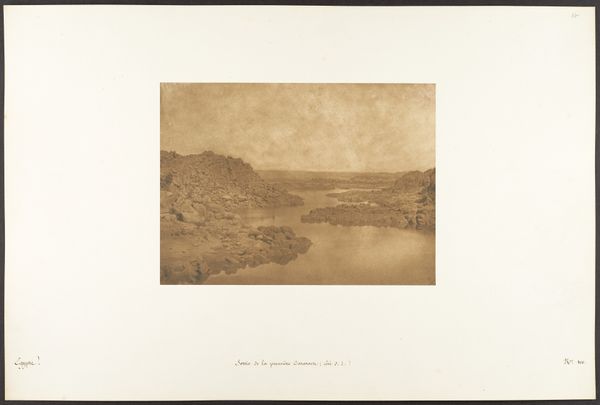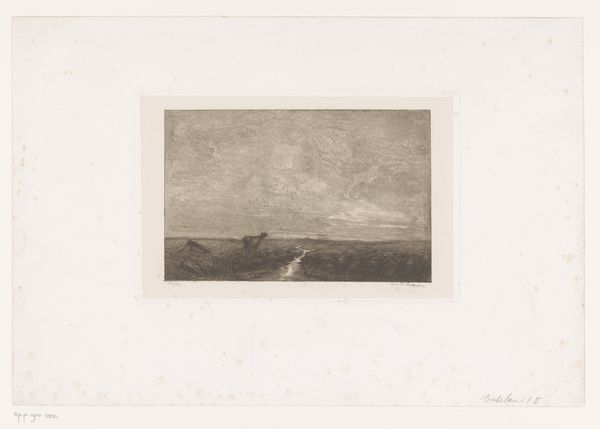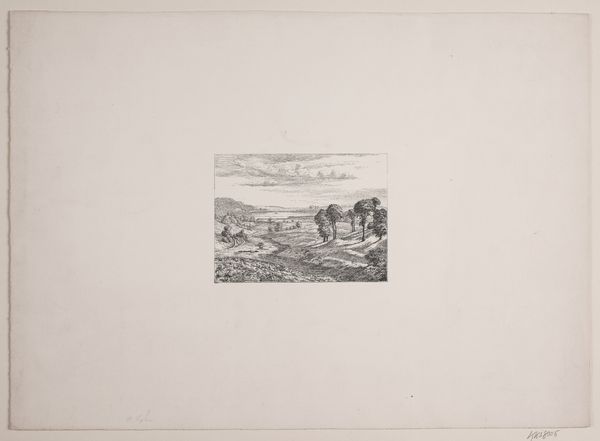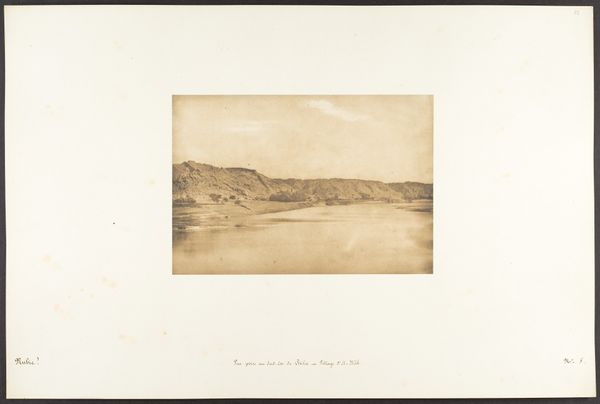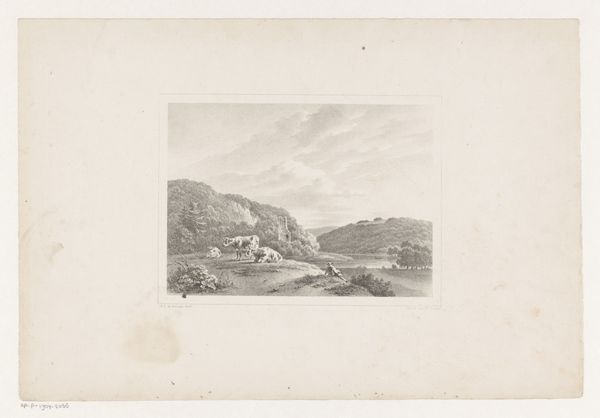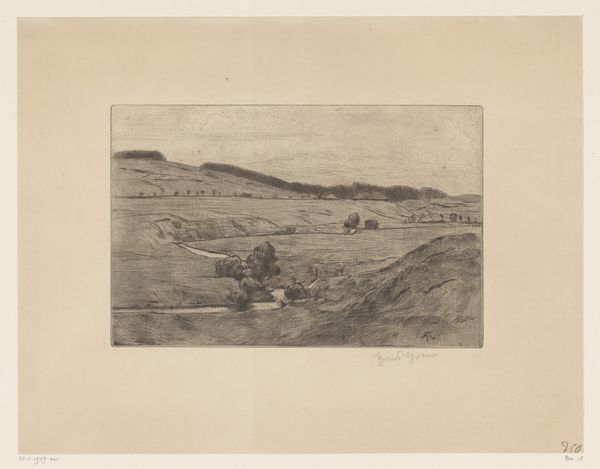
Vue prise à la première Cataracte (Rive droite) 1849 - 1850
0:00
0:00
photography, gelatin-silver-print
#
ink drawing
#
landscape
#
photography
#
gelatin-silver-print
#
realism
Dimensions: Image: 6 5/8 × 8 7/8 in. (16.9 × 22.6 cm) Mount: 12 5/16 × 18 11/16 in. (31.2 × 47.5 cm)
Copyright: Public Domain
Curator: This is Maxime Du Camp’s, "View Taken at the First Cataract (Right Bank)" created sometime between 1849 and 1850, captured in a gelatin-silver print. Editor: It's strikingly still. The tonality lends a sense of timelessness, almost like stepping back into an ancient landscape before time as we know it began. But there is a stark contrast between the rocky foreground and the blurred horizon line that creates a strong tension, wouldn't you agree? Curator: Yes, there's a lot going on here visually. Du Camp’s photographic expeditions to Egypt were very meticulous. Think about the Cataract itself: a boundary marker, the threshold to a whole other kingdom. The right bank signifies order, the "known world" versus the unpredictable chaos of the water—symbolizing change, risk. Editor: And what risks would Du Camp have been navigating as he was constructing a "known world" out of North Africa in these photos? It wasn't enough just to record facts—early photographs shaped ideas, policies. These are records of encounter. It's impossible not to see this vista through a colonial gaze, isn't it? I mean, how does showing this river also erase local relationships to that same landscape? Curator: Absolutely, the politics of representation were undeniably different then. I wonder if the rocks in the foreground—those bulky, rounded shapes—function to suggest durability, endurance, implying Egypt's strength through material substance, somehow resisting the transient, ever-flowing water? There’s a tactile quality even though we only see the photograph. Editor: Interesting. And if so, wouldn’t Du Camp also then be insinuating the strength he hopes to impart? Gelatin-silver was such a new technology at the time; maybe he's also demonstrating the permanence and solidity of this new medium. This "capture" on film, after all, attempts to fix that which naturally erodes, the passing moment. What about local photographers? Are their names attached to this legacy, do they appear with similar opportunities at the time? Curator: Those are good questions, I’m sure they existed and we can research and highlight the legacy of their work together to see how time treats symbols and records of it. Editor: A very good way to keep this image evolving as well.
Comments
No comments
Be the first to comment and join the conversation on the ultimate creative platform.
